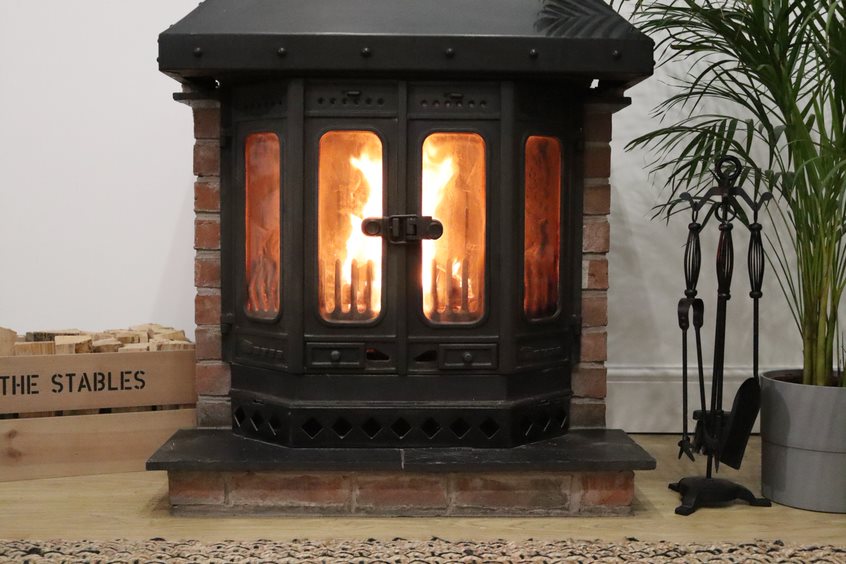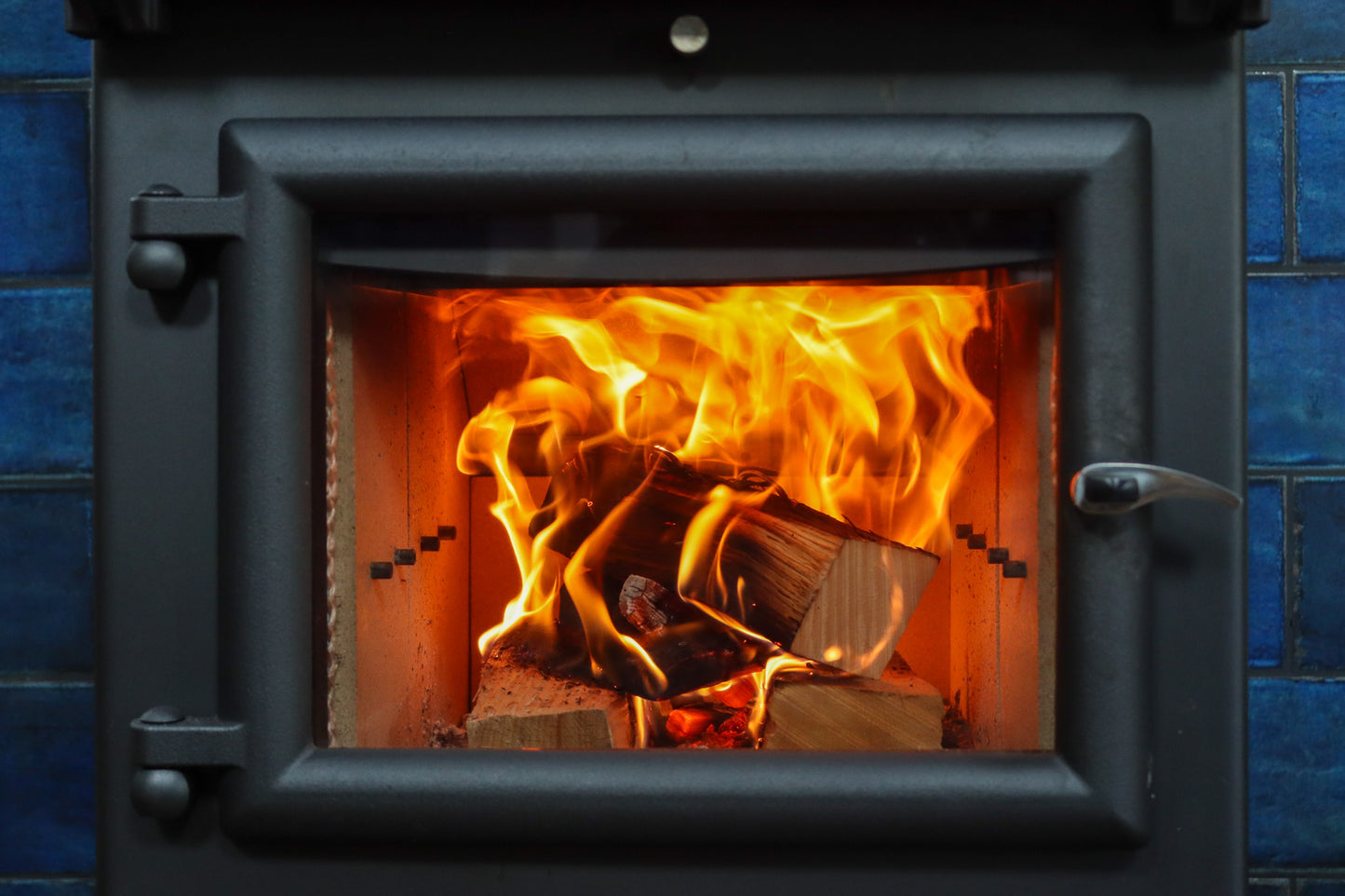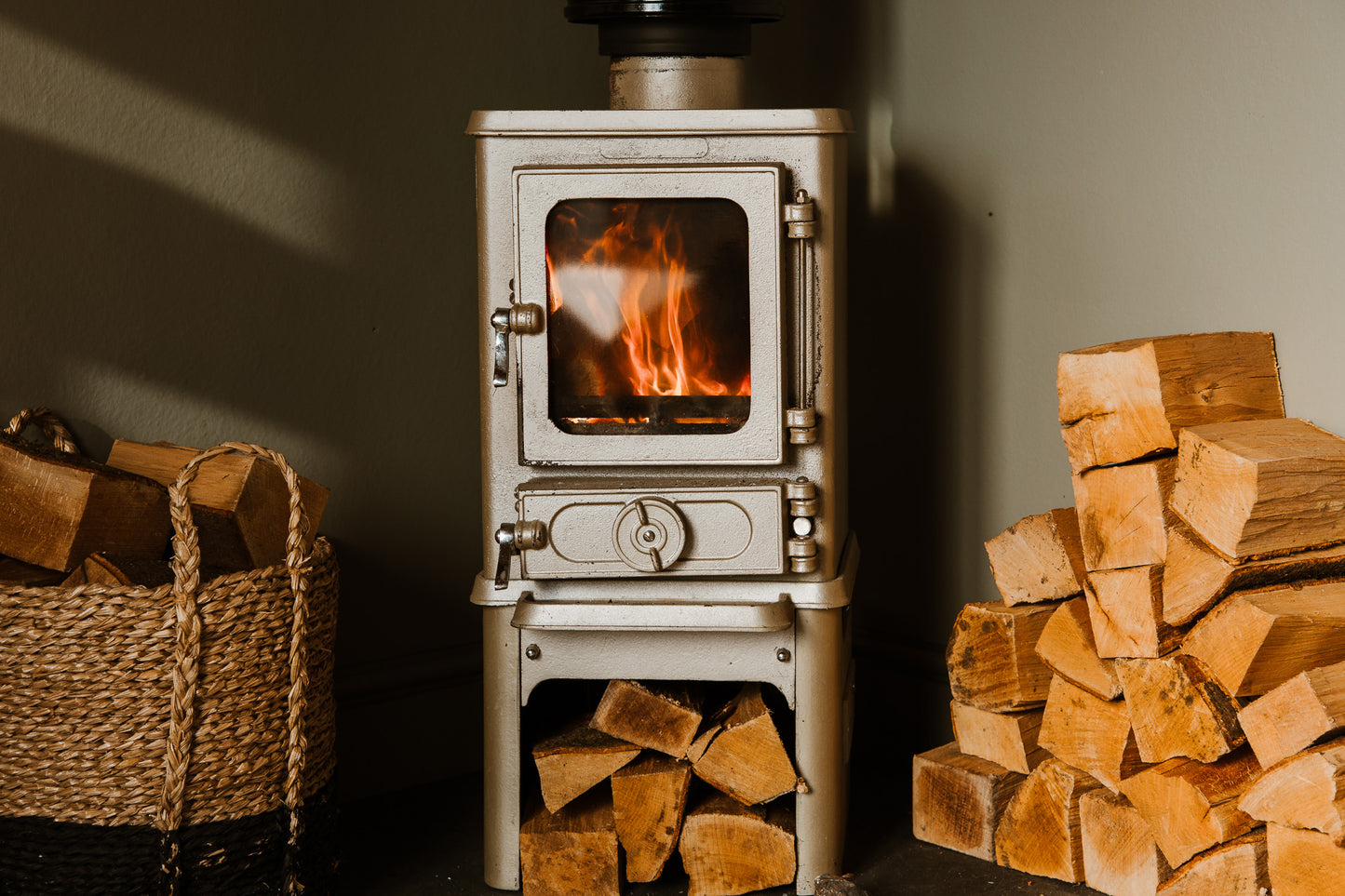

...and more of your burning questions
Whether you’re a log burner virgin, or you’ve been using it for years, fire management can be tricky.
We get a lot of questions from our customers on why their log burner isn’t working as expected, so we’ve put together a guide to answer some of your most common queries.
Which wood is best for my log burner?
You should only burn kiln-dried or properly seasoned hardwood in your log burner. Wood that contains more than 20% moisture will be difficult to light, burn out quickly and fill your living room with smoke!
Popular hardwood species for burning are oak, ash, beech and birch which all have slightly different burning properties but ultimately produce a very similar amount of energy - around 5.3 kWh/kg. We tested all the popular hardwood species and found that the thickness of the log and the moisture content are far more important than the species, there isn’t one species that’s ‘best’ to burn.
Why does the fire keep going out?
Remember the fire triangle from school?
Your fire needs heat, fuel and oxygen to burn properly, so if it’s going out it’s probably a problem with either your fuel or your airflow.

If your wood isn’t dried to below 20% moisture, it won’t burn well - the fire will be difficult to light and go out quickly so make sure you only buy kiln-dried or properly seasoned wood. If you’re not sure whether your wood is properly dry, you can buy a moisture meter for less than £20 and check the moisture content at home.
Assuming your wood is all good, you need to make sure air can flow through it. Make sure you build a proper log stack to light your fire as we show in our video on Top Down Firelighting.
If your fire goes out, check it hasn’t collapsed. If the logs are piled on top of each other, or are too close together, air can’t flow through and the fire will smoulder and go out. Use a poker or tongs to move the logs around and stack them so that oxygen can get it burning again
Once the log stack is all good, check your vents. A lot of people open the vents to get the fire roaring then close the air controls as early as possible to make the fuel last longer and save money. However, when you cut off the oxygen supply, firewood stops burning efficiently and starts to smoulder. If your fire is going out, there might not be enough oxygen so you might need to open your vents more. As Lawson Wight, Guild of Master Chimney Sweeps, told us ‘Burn it hot and burn the lot!’
Why is my log burner so smoky?
The most likely reason that your fire is smoky is the wood quality, If you’re seeing a lot of smoke, you’re probably not burning dry enough wood!
When wood is burned it emits particulate matter (PM), which are tiny particles of solids or liquids in the air. Some we can see, like smoke and soot, and others are microscopic. Kiln-dried wood typically emits around half of the PM when compared to wet wood, which is why it’s so important to make sure you only burn wood with a moisture content below 20%.
Why does my log burner glass go black?
Your log burner glass goes black because your fire is too smoky. Your fire is smoking too much, either because you aren’t using properly dry wood, or because there isn’t enough airflow.
Try some kiln-dried wood and build a top-down fire with plenty of airflow and you’ll be amazed – good quality wood will clean the majority of the black from the glass without you doing anything!
Found this useful?
We'd love it if you shared it with your fellow log burner enthusiasts!






